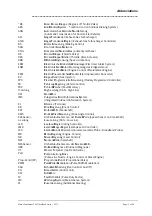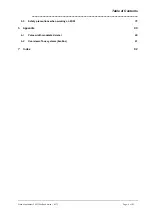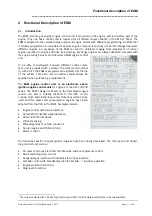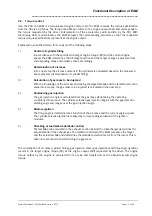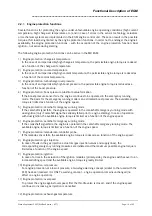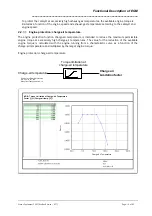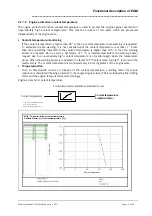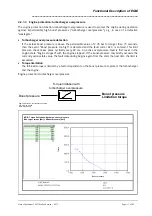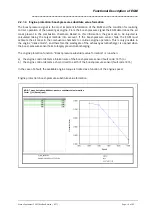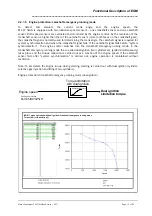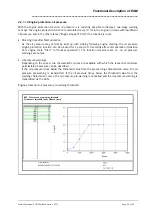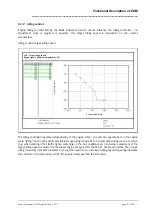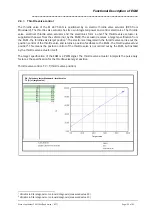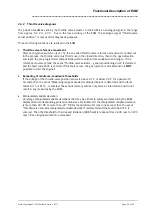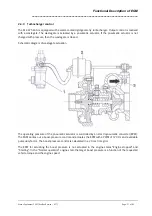
Functional Description of EGM
_____________________________________________________________________
Status September 2003 (EvoBus-Service / AFT)
Page: 16 of 83
2.2.1.2
Engine protection: coolant temperature
The engine protection function coolant temperature is used to protect the engine against operation at
impermissibly high coolant temperatures. This function consists of two parts which are processed
independently of the engine state.
•
Coolant temperature monitoring
If the coolant temperature is higher than 98 °C, then a coolant temperature pre-warning is requested.
To attenuate the pre-warning, it is not cancelled until the coolant temperature is at least 1 °C less
than the pre-warning threshold. If the coolant temperature is higher than 105 °C, then the warning
buzzer is activated. Here as well, a hysteresis of 1 °C is implemented before the warning buzzer
request due to an excessively high coolant temperature is cancelled again when the temperature
drops. When the warning buzzer is requested, the fault 2122 "Coolant temp. too high" is stored in the
fault memory. The coolant temperature is monitored every 40 ms regardless of the engine state.
•
Torque reduction
From a characteristic curve as a function of the coolant temperature, a limiting factor for torque
reduction is calculated ("boiling protection"), the target engine torque (FR) is multiplied by this limiting
factor and the engine torque is reduced accordingly.
Engine protection: coolant temperature
Coolant temperature
Coolant temperature
Limitation factor
Characteristic curve
Coolant-temperature limitation characteristic curve
Title:
Service EGM: Motorschutz
File:
kd_mts_tmot.vsd
Date of last change 2001-09-12
MOB - Torque limitation at coolant temperature
Limitation factor [-] = f(Coolant temperature [°C] )
Limitation f
ac
tor
Engine temperature


